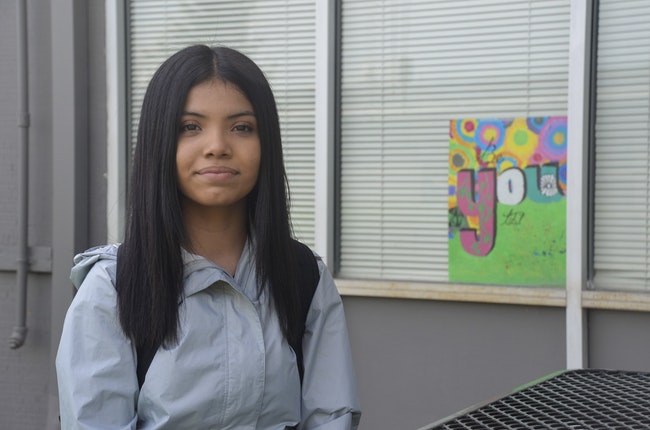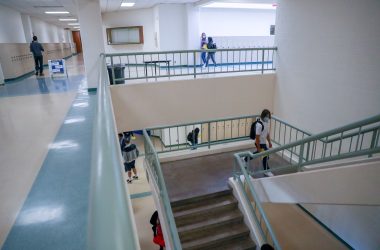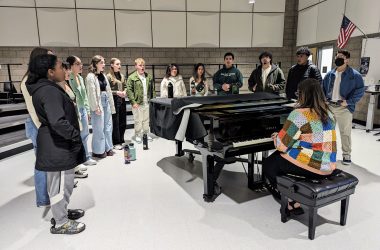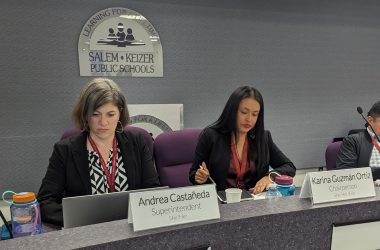Beyonce Ramirez wasn’t using drugs when a school counselor asked her if she was high during her freshman year at McNary High School.
But Ramirez had been struggling for months, feeling overlooked and overwhelmed in a school with 2,000 students, while being told she couldn’t enroll in the district’s alternative high school without being expelled.
So she lied.
Ramirez told the counselor her runny nose and red eyes, symptoms of allergies, were because she’d been using. She was expelled and, in 2019, began her sophomore year of high school at Roberts, the Salem-Keizer School District’s alternative school for middle and high school students.
There, Ramirez said she thrived in a smaller environment where she felt teachers had the time to answer her questions. She attended classes downtown at the Riverfront Learning Center.
“They saw my behavior drastically change,” said Ramirez, who’s now in her senior year and on track to graduate.
Educators at Roberts said stories like Ramirez’s are too common, and inspired a redesign of Salem-Keizer’s alternative education programs which launched this fall.
“Many students, on their path to an expulsion, somewhere along the way there’s been the start of a disengagement with school,” said Lisa McIntyre, an assistant principal at Roberts.
McIntyre and other alternative educators began brainstorming ways they could better serve students – in part, by reaching them before that disengagement happens.
It’s not unusual for some middle and high school students to want an alternative to the large classes and bustling hallways common at traditional schools in the district.
But the district previously offered only a few pathways to its alternative programs. Failing all your classes as a freshman could get you a spot at the learning center Ramirez attended. Expulsion could land students who wanted to go back to school at the Roberts main campus in east Salem. Getting pregnant meant a spot in the Teen Parent Program, housed on the Chemeketa Community College campus.
Students told they couldn’t get to the school they wanted to attend without an expulsion or a semester of Fs predictably ended up acting out, McIntyre said.
“If a kid is saying, ‘This isn’t working, I don’t want to be here,’” they had few options, said Gwen Bruey-Finck, the district’s director of secondary curriculum and instruction. “It was a reactive solution.”
Now, the district has combined several high school alternative programs that previously had separate campuses into one program they’re calling Roberts at Chemeketa.
Students who would have previously enrolled in the teen parent program, high school Riverfront Learning Center or Chemeketa’s regional high school completion program will be part of Roberts at Chemeketa, attending classes in a building on the south side of Chemeketa’s Salem campus.
The program also has spots for students from other school districts in the region who might previously have enrolled in Chemeketa’s high school completion program, said Sara Hastings, Chemeketa’s dean for high school partnerships. That program allows high school juniors and seniors to complete either a diploma or GED.
“We’re just amplifying what we can offer for students in the region,” she said.
For the first time this fall, local students like Ramirez who know they’ll struggle in a 2,000-student high school can also apply to the alternative program.
“We can be a proactive option,” said Miranda Cyrns, an assistant principal at Roberts.
The redesign took several years and included input from enrolled students, community groups and educators at both Salem-Keizer and Chemeketa.
Classes will be taught by a mix of high school and college faculty. Chemeketa will provide two advisors and a new career readiness coordinator to help students secure internships and professional experience. Salem-Keizer will also have counselors and a social worker, and will retain the nursery on-site so teen parents can get free childcare while attending classes.
A student-run cafe will allow students to train as baristas and get experience working in a small business.
Combining several existing programs means students can choose between more classes and resources that meet their goals and needs, whether that’s getting a GED, taking college credit classes in high school or making up credits for failed classes.
That also allows the school to better serve students who may need to make up credits in one subject, like English, but are ready for advanced coursework in another, like math.
Administrators hope the program will offer more options for students who seek out alternative education while retaining the small school feel that many students are looking for.
With space for 400 students, the high school program was full by the first week of school.
A student leadership class will offer input on how the school can better serve students.
“Not only do they have options, but they’ll also inform us about things that are working for them, or changes that they’d like to see,” Roberts Principal Bradley Shreve said.
Ramirez is now taking classes in the new program rather than the Riverfront campus she’d been attending.
She said she likes the feel of the building and the fact that she gets to have input in her education.
Before enrolling in alternative school, Ramirez felt like she couldn’t raise her hand in class to ask a question, because the teacher needed to move on for the 30 other students who already understood the material.
“You get lost in a lot of high schools,” she said. At Roberts, “you get that one-on-one, and that’s what you need to succeed.”
Contact reporter Rachel Alexander: [email protected] or 503-575-1241.
JUST THE FACTS, FOR SALEM – We report on your community with care and depth, fairness and accuracy. Get local news that matters to you. Subscribe to Salem Reporter starting at $5 a month. Click I want to subscribe!

Rachel Alexander is Salem Reporter’s managing editor. She joined Salem Reporter when it was founded in 2018 and covers city news, education, nonprofits and a little bit of everything else. She’s been a journalist in Oregon and Washington for a decade. Outside of work, she’s a skater and board member with Salem’s Cherry City Roller Derby and can often be found with her nose buried in a book.









